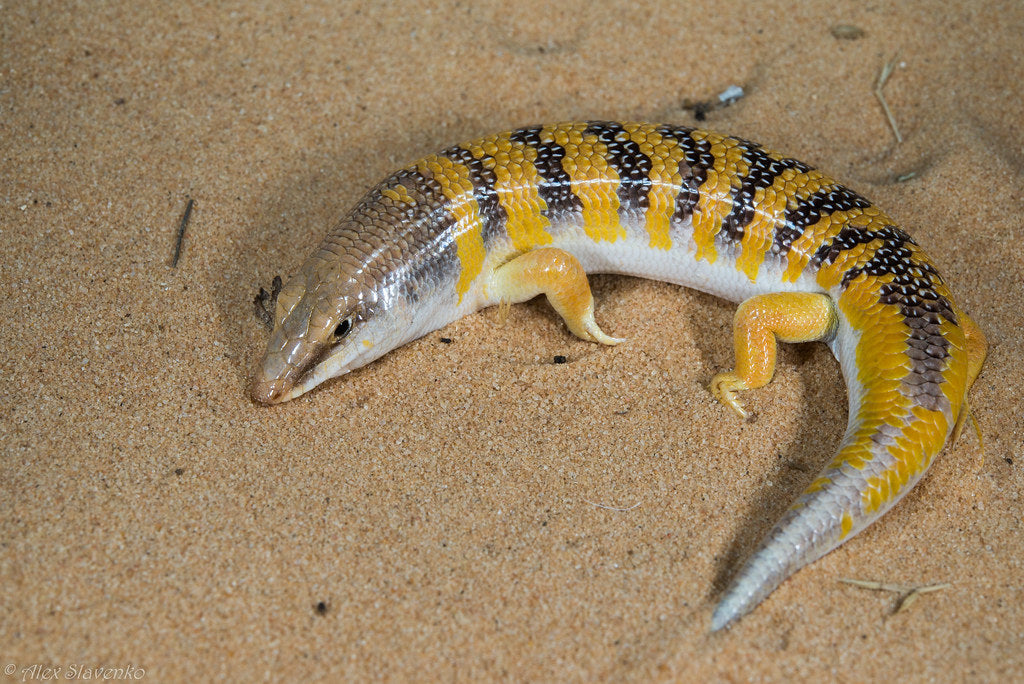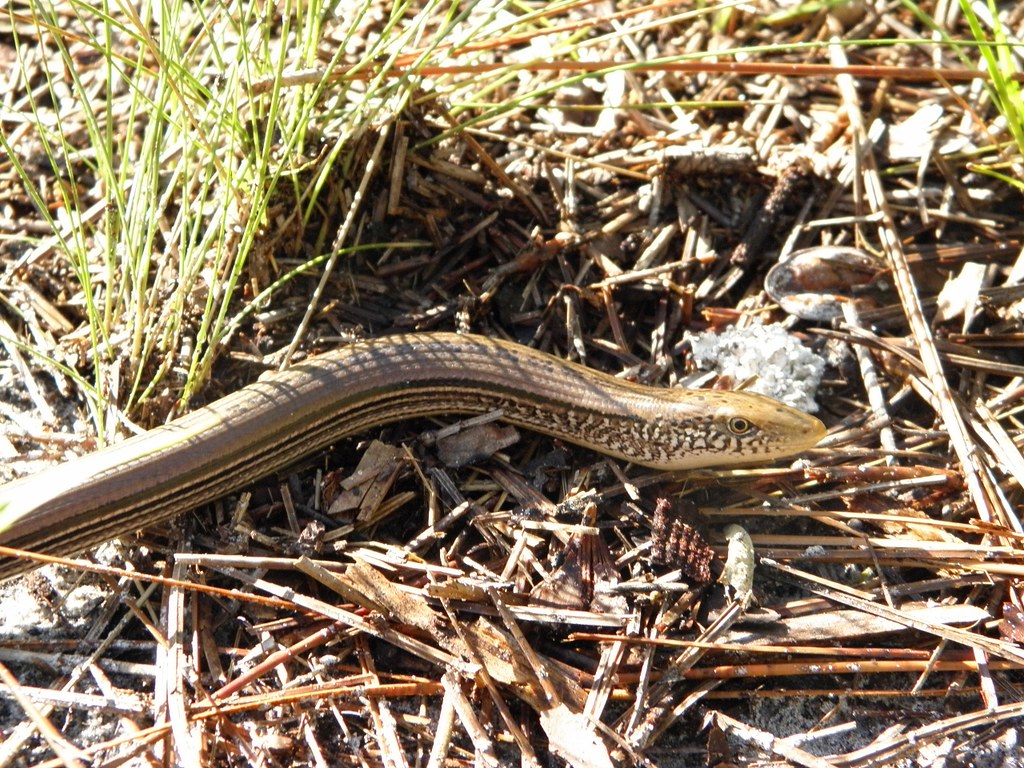Timor monitors (Varanus timorensis) are small, diurnal, semi-arboreal lizards native to the Indonesian Islands of Timor. They generally prefer tropical forest habitats, but have adapted to live in rock walls in deforested areas.
Timor monitors generally have a slim build with a long neck, long tongue, long tail, and a tapered head. Pattern involves a dark stripe through each eye, a dense pattern of ocelli and spots on the back, and an irregular to ringed pattern on the tail. Coloring is generally a dark gray/black base color with yellow or white markings and a pale underside with small dark markings.
As a dwarf monitor species, timor monitors are quite manageable as far as monitors go. However, they tend to be wild-caught and have shy dispositions that may be difficult to tame, making them an intermediate- to advanced-difficulty pet reptile. With good care, they can live for up to 20 years.
How much space do timor monitors need?
A single timor monitor should be housed in no smaller than a 5’L x 2’W x 4’H enclosure. This may seem excessive for such a (relatively) small lizard, but it’s important to keep in mind that this species is arboreal, needs a deep substrate layer, and as monitor lizards, are quite active. If you can provide a larger (particularly taller) enclosure, do it!
As a general rule, it’s best not to house more than one timor monitor per enclosure.
Do timor monitors need UVB?
Yes! Timor monitors are diurnal, which means that they are most active during the day, and naturally exposed to lots of sunlight on a day-to-day basis. This means that they need UVB light as part of their enclosure. The best UVB bulbs for a timor monitor housed in a 5’ long enclosure are:
- Zoo Med Reptisun T5 HO 5.0, 34”
- Arcadia Forest 6%, 34”
If the UVB is mounted over mesh, then the basking surface should be placed so the monitor’s back will be 7-9” below the lamp. If the UVB is mounted inside the enclosure, then the basking surface should be placed so the monitor’s back is 11-12” below the lamp. The UVB bulb should be housed in a reflective fixture like Arcadia or Vivarium Electronics, and placed on the basking side along with the heat lamp. UVB bulbs decay over time, so you will need to replace yours every 12 months to maintain performance.
In addition to UVB, since timor monitors are day-active lizards, it’s beneficial to provide an additional daylight-spectrum lamp to make sure most of the enclosure is brightly illuminated. Use a couple of strong 6500K LED or T5 HO fluorescent plant grow lights for best results.
Timor monitors should get 12 hours of light per day year-round.
What basking temperatures do timor monitors need?
Like most monitors, timor monitors like it hot! They should have a basking surface temperature between 130-175°F, with cool side temperatures down to 82-90°F. Nighttime temperatures should drop no lower than 70°F, which can usually be accomplished by turning off the heat source. Measure your temperatures with a digital probe thermometer with the probe placed on the desired surface.
Provide heat for your timor monitor by imitating the sun with a cluster of at least two high-wattage halogen heat lamps placed on one side of the enclosure. Do not use ceramic heat emitters (CHEs), heat mats, red bulbs, or blue bulbs, as these are not as effective.
The basking surface itself should be a large, flat piece of rock or sturdy branch. For best results, use a Retes stack.
What humidity levels do timor monitors need?
Timor monitors are a tropical species that needs a humid environment to stay healthy. Average humidity levels should be between 70-85%. Humidity should be measured with a wall-mounted digital hygrometer placed in the middle of the enclosure. Daily misting with a pressure sprayer and/or using a humidifier connected to a humidistat is helpful for maintaining high humidity.
Reptile humidifiers and foggers should only be used with distilled water and require frequent disinfecting to keep your reptile from getting sick.
What substrate is good for timor monitors?
Using substrate in your timor monitor’s enclosure covers the floor, cushions your pet’s body, helps maintain humidity, and gives the lizard something to dig around in. We recommend the following substrates for timor monitors:
A 40/20/20 mix of topsoil, coconut fiber, and play sand also works well. Layering clean, chemical-free leaf litter on top of the substrate can help with humidity as well as add enrichment value.
Substrate should be at least 12” deep (preferably deeper) and completely replaced every 3-4 months. Remove poop and urates daily, along with any contaminated substrate.
What décor can you use in a timor monitor terrarium?
Timor monitors are highly intelligent and curious animals, so it’s terribly boring for them to be stuck in an enclosure with nothing in it except a branch and somewhere to hide. It doesn’t matter how big the enclosure is if you don’t put things in it for your pet to use and interact with.
Here are some ideas:
- climbing branches
- braided vines
- hollow logs
- additional hiding places
- live or artificial plants
Although timor monitors are fairly small and light, take care to make sure climbing branches are well anchored to the walls and/or floor of the enclosure to prevent collapse.
What do timor monitors eat?
Timor monitors are insectivores, and they need a varied diet of invertebrate prey (preferably live) in order to get the nutrition that their bodies need. Offer food every morning. Juveniles should get as much as they can eat in one day, but subadults and adults should only be allowed as much as they can eat in a 5-10 minute period.
Feeders should be no wider than the lizard’s head.
Invertebrates for timor monitors: dubia roaches, discoid roaches, red runner roaches, crickets, black soldier fly larvae, hornworms, silkworms, mealworms, superworms, darkling beetles, grasshoppers, scorpions, centipedes, giant isopods
Small freshwater fish, such as guppies, mollies, and mosquito fish, can make good occasional treats.
Supplements
You will also need calcium and vitamin supplements to prevent your timor monitor from developing a deficiency. We recommend Repashy Calcium Plus LoD, lightly dusted on all feeder insects.
Water
It’s best to provide a large water bowl or tub where your lizard can get a drink and soak as desired. Change the water daily and scrub the bowl with a reptile-safe disinfectant weekly, or whenever it becomes soiled.
Do timor monitors like to be handled?
Few reptiles actually “like” to be held, and timor monitors are generally quite shy and/or flighty. However, one great way to interact and build trust with your monitor is through hand-feeding with a pair of feeding tweezers!
*This care sheet contains only very basic information. Although it’s a good introduction, please do further research with high-quality sources to obtain additional information on caring for this species.
"Timor monitor" by Tambako the Jaguar is licensed under CC BY-ND 2.0




Leave a comment
This site is protected by hCaptcha and the hCaptcha Privacy Policy and Terms of Service apply.